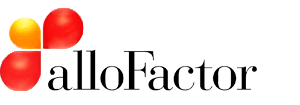 |
| Challenges in running a clinic |
| |
| Practices today face constant reductions in their reimbursement levels. This can be devastating for single provider practices, especially if they are just starting out. |
Manual Processes
A typical set of functions used in a clinic is shown below. Most of these tasks are manually done and even if a system is in place, duplicate information is entered into each systems! |
 |
Employee Costs
Employees costs are usually the largest component in running a practice and clinics need to reduce their workforce to be able to run their practice profitably. In addition, employee turn over is high and training staff becomes a constant effort. |
Hardware & Software Costs
Upfront costs for clinical software can often run into tens of thousands of dollars. And there are Annual Maintenance Contracts that the software vendors enforce on the practice which typically run to 25% of the initial costs. And once purchased, the technology itself gets outdated and requires an upgrade every 3 years again resulting in upgrade costs. Resellers push expensive legacy software systems based on their commissions. Providers often form opinion based on their price without assessing their Value Proposition or Return on Investment. |
Productivity
Practices need to get more done with less resources. Time is the most precious asset for providers and staff and current software tools are not built focused on increasing productivity. Hence they tend to trust inefficient manual processes and employ additional employees to perform these tasks. |
Revenue Cycle Expertise
Due to the complexities associated with healthcare reimbursement, practices often lack skilled staff to collect payments quickly and accurately. Fragmented billing software market has led to employees not being skilled in using product. Inefficient processes at every level results in delays, especially in collecting insurance payments. |
Transaction costs
External transactions through intermediaries such as clearinghouses incur an upfront signup costs, fixed monthly fees and long contracts. |
| Clearinghouse Services |
Fee |
| Electronic Claim Submission |
$75 |
| Electronic Remittance Advice |
$50 |
| Eligibility Verification |
$25 |
 |
 |
|
Smaller practices that do not have high patient volume, the transaction costs become very high. In addition, many clearinghouses neither have stable technology nor good customer support. |
Integration Challenges
A typical practice is at best a hodgepodge of silo-software solutions that work in isolation but has limited capability to interface with each other to deliver a comprehensive solution. Today, it is hard to find a best of breed suite of products that is widely used by practices across the nation - the few that have high level of automation are too expensive for the average practice to afford. This results in multiple standalone systems that do not talk to each other resulting in duplicate data entries and glaring efficiency gaps. |


|


